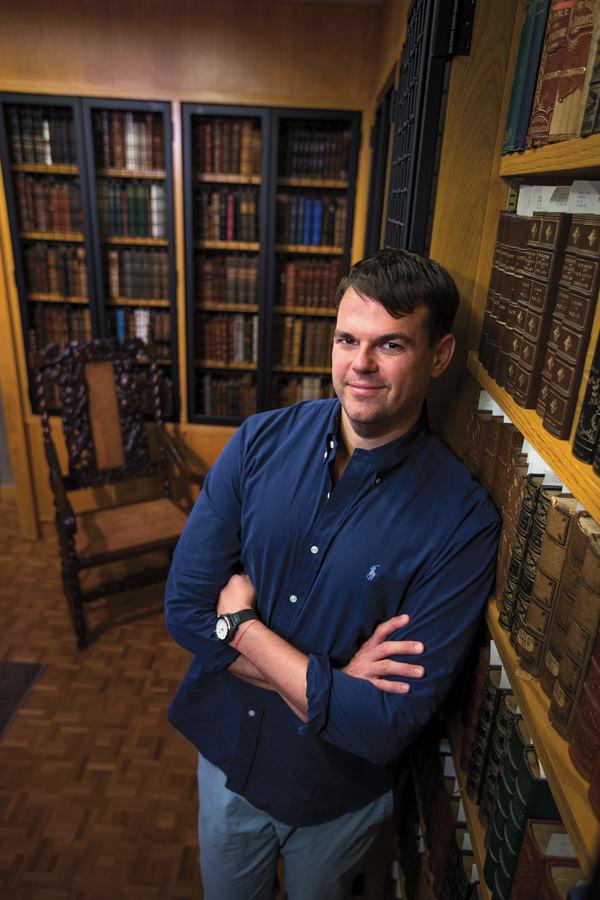Social History
Associate Professor Jim Downs writes about history from the bottom up.
Every generation develops a new way of telling the history of the past.
Up until the mid-20th century, history was reserved for the elite. Even in the U.S., college students interested in history took courses about European wars and state politics. They read biographies of fearless military leaders, imperial kings and troubled aristocracies.
This was a mistake. Focusing on the rich and powerful reinforced their position in society and left everyone else with no context for their plight and no platform to fight their oppression.
In the 1960s, the explosion of the civil rights movement combined with the emergence of feminism radically transformed college curricula and facilitated the development of a new method of history known as social history.
No longer did historians simply want to chronicle the lives of the elite, but instead they began the arduous process of writing the history of people who have left little to no historical trace: black people, women and laborers. They began the process of writing what one historian coined as "history from the bottom up."
This new telling of historical narratives not only offered a more diverse portrait of the American past, but also provided the civil rights movement and the women's movement with a historical context in order to better situate their struggles. These historians coined yet another phrase: "the usable past."
As a college student in the mid 1990s, I remember the excitement of reading this new social history and having my professors tell me that there was so much more to do, so much more to uncover, so much more to write. When I decided to enroll in graduate school in 2000, it was less about producing knowledge for the sake of scholarly debate and more about uncovering lost and forgotten histories of people, whose stories purposely were left from being told.
It's what led me to uncover the history of how many enslaved people, at the moment of emancipation, became sick and died.
Since the early 20th century, historians have been writing about the Civil War, but the focus of this early work ranged from the politics of the period to the details of the battles to the experiences of the soldiers.
By the early 1970s, an increasing number of books began to be published on the black experience during the war, but the focus of those books followed in the footsteps of previous studies. Instead of discussing white people in politics, they discussed black people in politics. Instead of detailing the lives of white soldiers, they detailed the lives of the small but significant number of black Union soldiers.
When I turned my attention to illness, sickness and death during the Civil War, I was not only attempting to write a new social history of black people. I was also trying to write a new history of the Civil War that asked a new set of questions, which attempted to place health, illness and epidemics at the center of the story of the war.
The resulting book, Sick from Freedom: African-American Illness and Suffering during the Civil War and Reconstruction, opened a new way of thinking about the Civil War and, when it was published, The New York Times ran a story about it on the front page of the arts section.
Yet some historians pushed back—they thought that my telling of the deadly consequences of emancipation undermined the importance of freedom that the war generated. I disagree; I believe the narrative of freedom obscured the epidemics that devastated the lives of freed slaves.

Due to the outbreak of HIV in the 1980s, historians, journalists, public health officials and even gay people often argue that the virus spread due to the sexual libertine world created by gay liberation in the 1970s. Based on over 10 years of research in community center archives, I discovered that this was not the case.
Sex mattered greatly to many LGBT people, but it was not the only thing that mattered. LGBT people created their own newspapers, founded their own churches, established bookstores and reading groups, and produced an entirely new cultural lexicon. This world had been forgotten or, at best, overshadowed by stories about gay sex that helped to explain the rise of HIV.
As a social historian, I felt compelled to excavate a history of the 1970s that had not been widely documented and known, and I wrote Stand By Me for many of the same reasons that earlier generations of social historians wrote their histories from the bottom up. I wanted to offer the LGBT community today a "usable past," a narrative about the actions of their predecessors, who believed in creating a community and culture that LGBT people could embrace.
